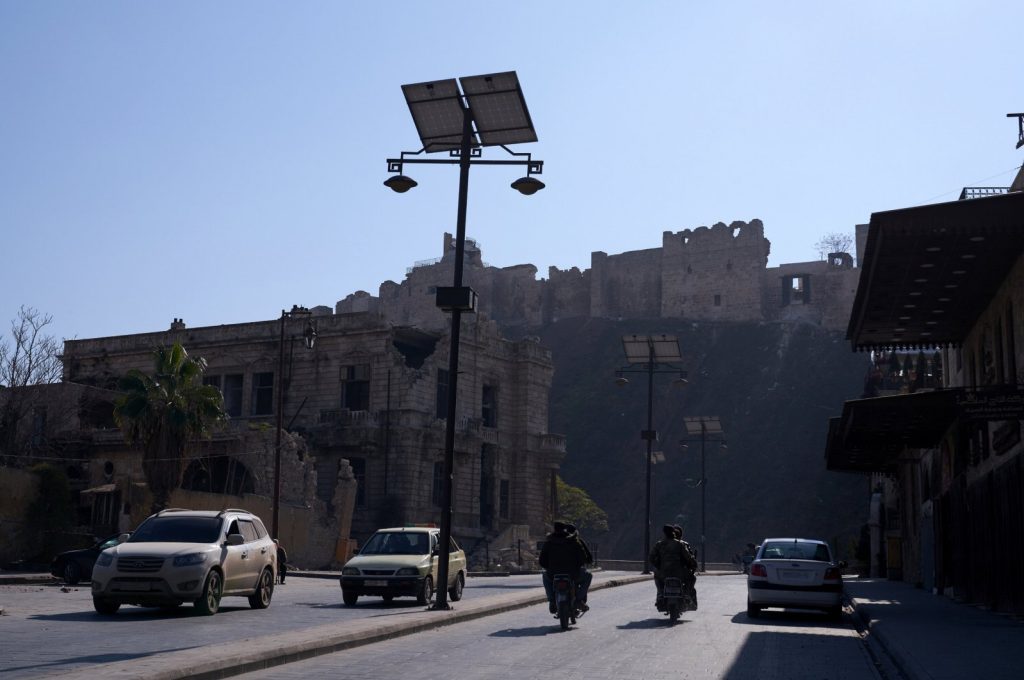Aleppo largely fell under the control of the anti-regime forces on Saturday as they captured the province’s airport and dozens of nearby towns. The lightning offensive to overrun Syria’s second-largest city may mark a turning point in Syria’s civil war that has been languishing for a long time.
The offensive began last Wednesday and apparently caught the Assad regime forces off guard while Assad’s key ally Russia rushed to help with airstrikes in Aleppo.
The fighting has killed at least 327 people, most of them combatants but also including 44 civilians, according to the Syrian Observatory for Human Rights.
“Hayat Tahrir al-Sham (HTS) and allied factions … took control of most of the city and government centers and prisons without meeting great resistance,” the Britain-based war monitor said. They also overran Aleppo airport after government forces withdrew and took control of “dozens of strategic towns without any resistance,” it added. The Observatory reported that the army had pulled out of Syria’s fourth largest city, Hama, around 140 kilometers (90 miles) south of Aleppo, in the face of the advance. But a military source cited by the regime media denied the army had withdrawn, insisting units were still holding their positions in the anti-regime forces’ path.
The regime’s army confirmed that the anti-regime forces had entered “large parts” of the city of around 2 million people, adding that “dozens of men from our armed forces were killed and others wounded.”
Later on Saturday, “at least 16 civilians were killed and 20 others wounded” in fresh strikes. HTS ordered a curfew until 5 p.m. (3 p.m. GMT) Sunday for the safety of residents.
The offensive met mixed reactions from Assad’s allies and others. France called on all sides to protect civilians, while the United States suggested that Assad’s dependence on Moscow and Tehran had paved the way for the loss of Aleppo. Syria’s “reliance on Russia and Iran,” along with its refusal to move forward with a 2015 peace process outlined by the U.N. Security Council, “created the conditions now unfolding,” U.S. National Security Council spokesperson Sean Savett said in a statement Saturday.
Members of HTS-led forces were seen posing with their flag outside a police station bearing a large portrait of Assad and standing below a partially burning billboard of the president.
The Syrian regime’s army said the anti-regime forces launched “a broad attack from multiple axes on the Aleppo and Idlib fronts.” As the fighting raged for a fourth day, the Observatory said that the government had lost 100 troops and militiamen while the anti-regime forces had lost 183. It said the anti-regime forces had taken dozens of towns across the north, including Maaret al-Numan and Khan Sheikhun.
Pro-regime radio station Sham FM reported that “armed groups were present in a number of streets and neighborhoods in Aleppo.” “Most civilians are avoiding leaving their homes and public and private institutions in the city are almost completely shut,” it added.
The Observatory said, “the governor of Aleppo and the police and security branch commanders withdrew from the city center.”
Western districts of Aleppo had been under anti-regime forces’ control until 2016 when a siege by the regime forces forced a negotiated evacuation.
Russia, whose air support was decisive in turning the tide in the regime’s favor, joined Iran on Saturday in expressing “extreme concern” over their ally’s losses.
“Strong support for the sovereignty and territorial integrity of the Syrian Arab Republic was reaffirmed,” the Russian Foreign Ministry said in a readout of a call between Sergei Lavrov and his Iranian counterpart Abbas Araghchi.
Tehran said Araghchi would travel to Damascus on Sunday for talks on the assault, which saw the Iranian consulate in Aleppo come under attack.
Araghchi reiterated Tehran’s unwavering support for Syria on Sunday, according to the Iranian official news agency IRNA. “Today, I am leaving for Damascus to convey the message of the Islamic Republic to the Syrian government,” Araghchi told reporters at the Navy Day ceremony held on the Kish Island in southern Iran. “We firmly support the Syrian army and government,” he added. “We believe that after the (Israeli) Zionist regime’s failure, the enemy is trying to implement its sinister plots of destabilizing the region through these terrorist groups,” the minister noted, referring to anti-regime groups in Syria. Araghchi asserted that “the Syrian army will once again be victorious over these terrorist groups as in the past.”
Since 2020, the Idlib enclave has been subject to a Turkish- and Russian-brokered truce that has largely been held despite repeated violations.
Iraqi Prime Minister Mohammed S. Al Sudani spoke with Assad on Saturday and told him that “Syria’s security and stability … play a crucial role in regional security.” Iraqi sources also announced on Sunday that the country shut down its borders with Syria.
On Sunday, the regime forces rushed in reinforcements to push back the anti-regime forces advancing farther into the northern Hama countryside and surrounding strategic locations in adjacent Aleppo. HTS’s claim of entering Hama was not confirmed.
The 2016 battle for Aleppo was a turning point in the war between Syrian regime forces and anti-regime groups after 2011 protests against Assad’s rule turned into an all-out war. After appearing to be losing control of the country to the anti-regime forces, the Aleppo battle secured Assad’s hold on strategic areas of Syria.


